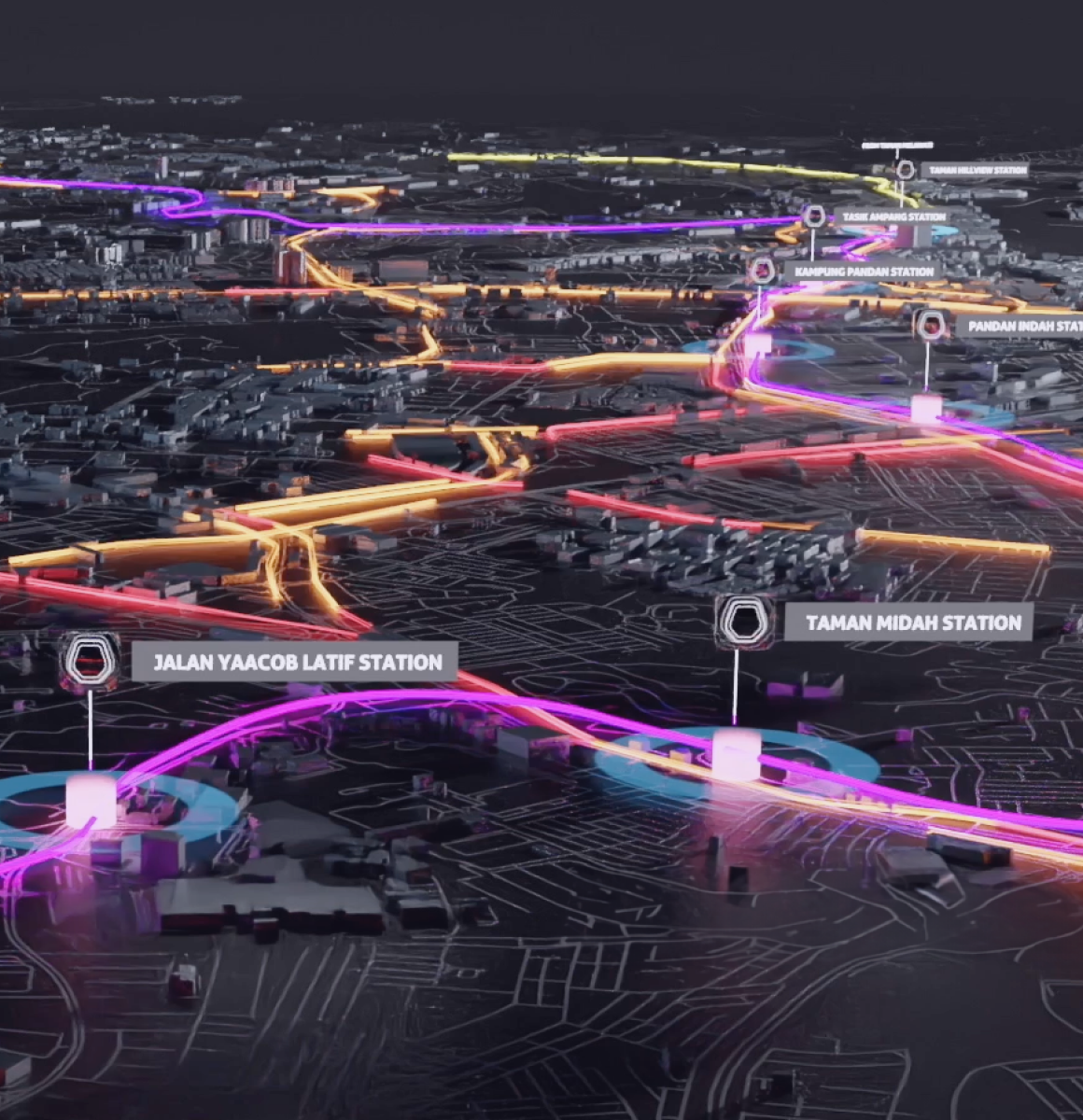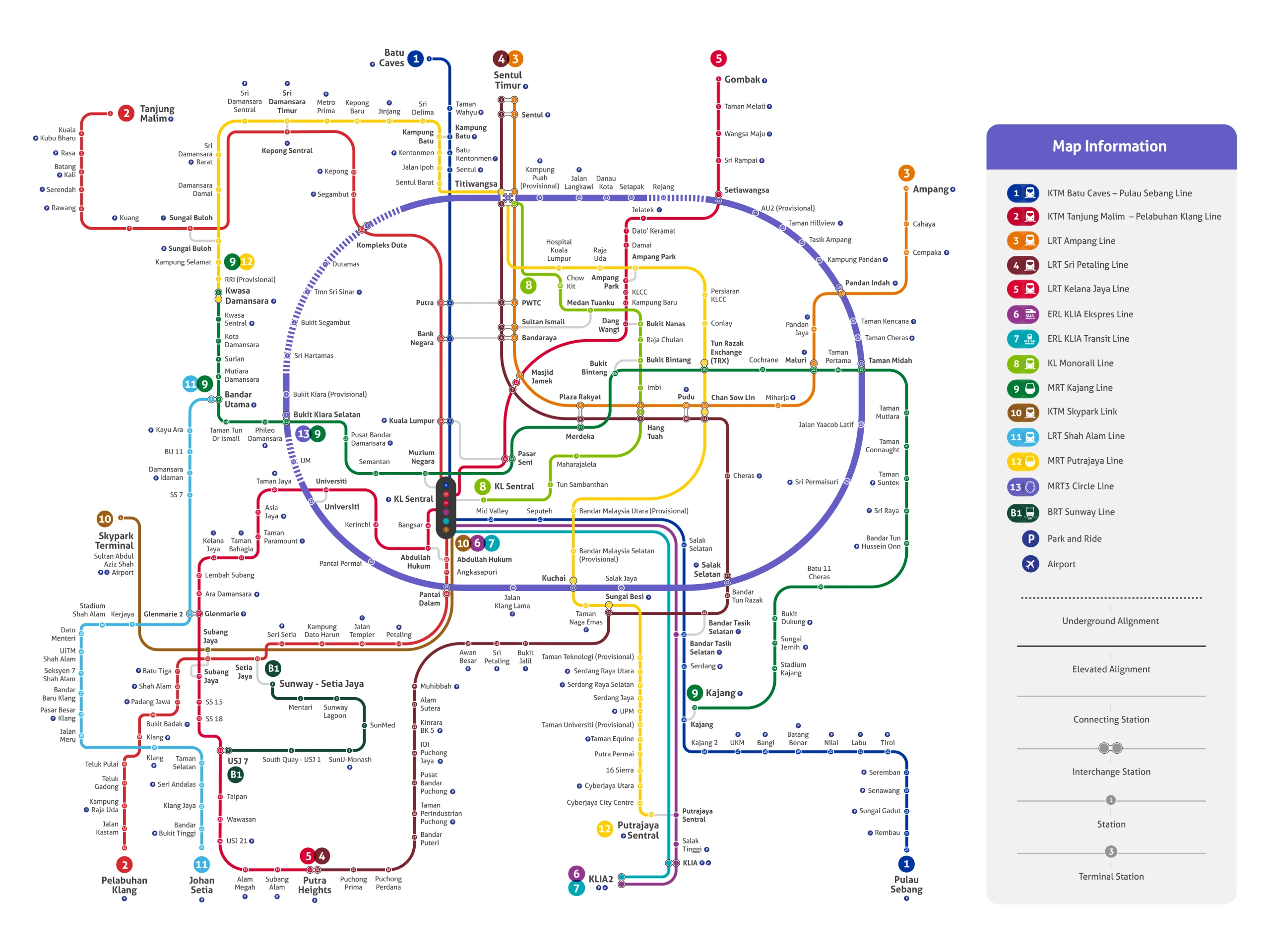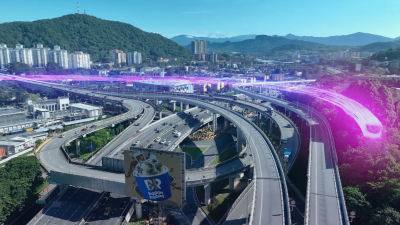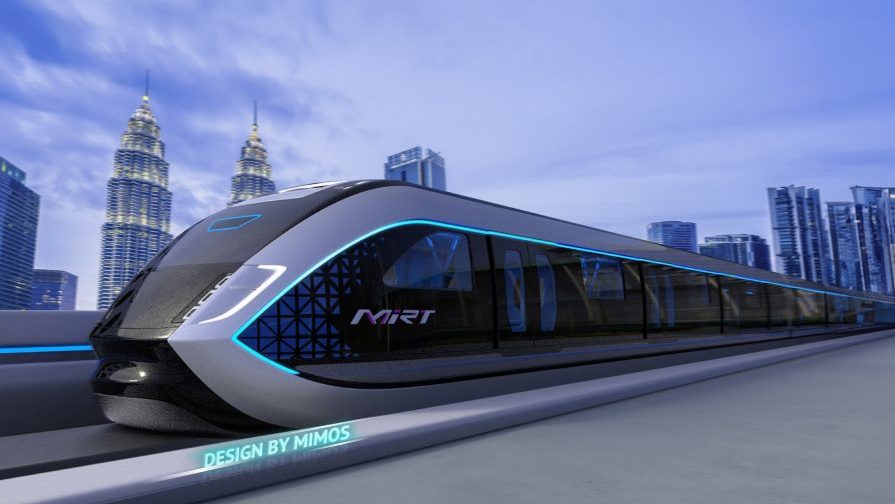Connecting Communities Through Transit
The Klang Valley Mass Rapid Transit (KVMRT) Project is a transformative initiative aimed at revolutionizing urban mobility in Greater Kuala Lumpur / Klang Valley Region. This extensive network of modern rail lines is designed to reduce traffic congestion, enhance connectivity, and promote sustainable urban growth. By providing a reliable, efficient, and environmentally friendly public transportation option, the KVMRT Project significantly improves the quality of life for residents and supports the city’s economic development.
The first two lines of the KVMRT project, MRT Kajang Line and MRT Putrajaya Line, have already made a positive impact on the daily lives of thousands of commuters. MRT Kajang Line, which commenced operations in 2017, connects 29 stations from Sungai Buloh to Kajang. Fully operational in 2023, MRT Putrajaya Line further extends the network by adding another 36 stations, linking Sungai Buloh to Putrajaya. The upcoming Circle Line (MRT3) will complement the success of both these lines, significantly enhancing accessibility and connectivity for the rakyat.
Discover MRT3 Circle Line within the Klang Valley Integrated Transit Network
Access the map to explore the Circle Line (MRT3). Click or select ‘Download Map’ to view detailed information on each station, route, and connection within the Klang Valley Transit Network.

Enhanced First & Last Mile Connectivity
To enhance commuter experience, the MRT Circle Line will be supported by comprehensive first and last mile connectivity. This includes an integrated network of walkways, bus services, and flexible transport options, ensuring seamless travel to and from MRT stations.
A well-planned pedestrian network will be established within a 500-meter radius of key locations, such as residential areas and public amenities, providing safe, convenient, and direct access to MRT stations. The walkway designs prioritize safety, accessibility for the disabled, and comfort.
- Standard Walkways: Located in residential areas, these pathways facilitate easy access to the MRT network.
- Sheltered Walkways: Designed for high pedestrian traffic zones, such as city centers and commercial districts, these walkways offer protection from weather elements.
- Pedestrian Overhead Bridges: Constructed to enable safe crossings over major roads and highways, especially near elevated MRT stations.
- Pedestrian Subways: Provide direct, underground access to major developments from corresponding MRT stations.
To cater to areas with lower accessibility, Demand-Responsive Transport (DRT) services will be introduced. These flexible transport solutions are designed to improve connectivity, especially in regions not extensively covered by traditional public transport routes.





